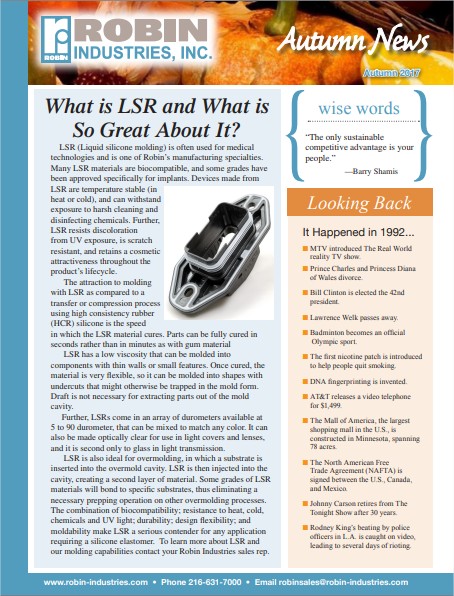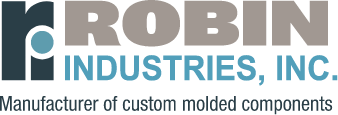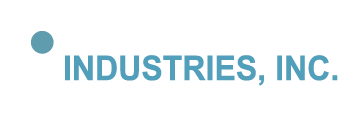What is LSR and What is So Great About It?
LSR (Liquid silicone rubber molding) is often used for medical technologies and is one of Robin’s manufacturing specialties. Many LSR materials are biocompatible, and some grades have been approved specifically for implants. Devices made from LSR are temperature stable (in heat or cold), and can withstand exposure to harsh cleaning and disinfecting chemicals. Further, LSR resists discoloration from UV exposure, is scratch resistant, and retains a cosmetic attractiveness throughout the product’s lifecycle.
The attraction to molding with LSR as compared to a transfer or compression process using high consistency rubber (HCR) silicone is the speed in which the LSR material cures. Parts can be fully cured in seconds rather than in minutes as with gum material LSR has a low viscosity that can be molded into components with thin walls or small features. Once cured, the material is very flexible, so it can be molded into shapes with undercuts that might otherwise be trapped in the mold form. Draft is not necessary for extracting parts out of the mold cavity.
Further, LSRs come in an array of durometers available at 5 to 90 durometer, that can be mixed to match any color. It can also be made optically clear for use in light covers and lenses, and it is second only to glass in light transmission.
LSR is also ideal for overmolding, in which a substrate is inserted into the overmold cavity. LSR is then injected into the cavity, creating a second layer of material. Some grades of LSR materials will bond to specific substrates, thus eliminating a necessary prepping operation on other overmolding processes. The combination of biocompatibility; resistance to heat, cold, chemicals and UV light; durability; design flexibility; and moldability make LSR a serious contender for any application requiring a silicone elastomer. To learn more about LSR and our molding capabilities contact your Robin Industries sales rep.



